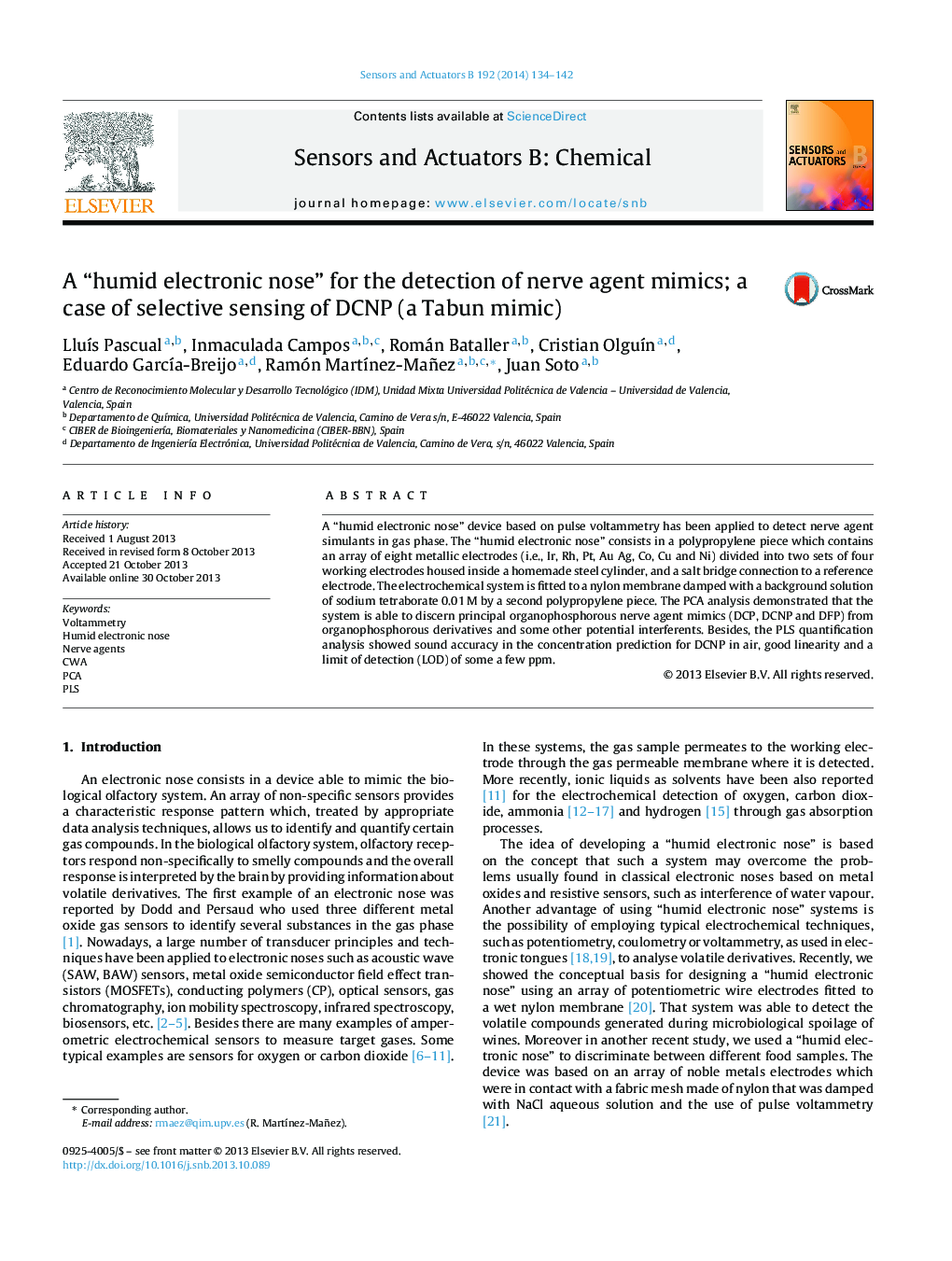| Article ID | Journal | Published Year | Pages | File Type |
|---|---|---|---|---|
| 7147251 | Sensors and Actuators B: Chemical | 2014 | 9 Pages |
Abstract
A “humid electronic nose” device based on pulse voltammetry has been applied to detect nerve agent simulants in gas phase. The “humid electronic nose” consists in a polypropylene piece which contains an array of eight metallic electrodes (i.e., Ir, Rh, Pt, Au Ag, Co, Cu and Ni) divided into two sets of four working electrodes housed inside a homemade steel cylinder, and a salt bridge connection to a reference electrode. The electrochemical system is fitted to a nylon membrane damped with a background solution of sodium tetraborate 0.01Â M by a second polypropylene piece. The PCA analysis demonstrated that the system is able to discern principal organophosphorous nerve agent mimics (DCP, DCNP and DFP) from organophosphorous derivatives and some other potential interferents. Besides, the PLS quantification analysis showed sound accuracy in the concentration prediction for DCNP in air, good linearity and a limit of detection (LOD) of some a few ppm.
Keywords
Related Topics
Physical Sciences and Engineering
Chemistry
Analytical Chemistry
Authors
LluÃs Pascual, Inmaculada Campos, Román Bataller, Cristian OlguÃn, Eduardo GarcÃa-Breijo, Ramón MartÃnez-Mañez, Juan Soto,
